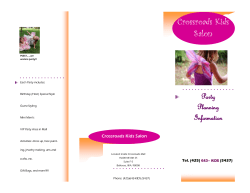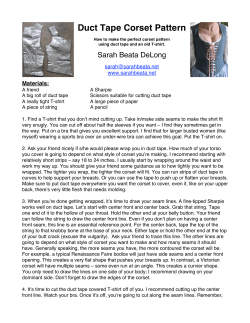
How to apply your vinyl graphics
How to apply your vinyl graphics Proper prep and careful application will yield the best results So you have to install some vinyl lettering! Here are some instructions to help you through the process. First, keep your decals away from any liquids and overspray. While cleaning and doing prep work, put the vinyl graphics in a safe place to avoid damage.The backing paper will wrinkle if it gets wet, and the transfer tape adhesive can also be affected by moisture. Above all, take your time and be careful during installation.This material cannot be peeled up and put down again if you wrinkle it during application.We are not responsible for graphics damaged by application problems. The sign surface must be warm for proper application.Our rule of thumb is that it must be at a minimum of 60 degrees for several hours before application.We do not recommend applying graphics outdoors. The surface must be clean and dry.Wash vehicle door panels with degreaser (an automotive product or dish detergent is fine) and rinse off.Wash same area a second time with spray-on window cleaner and dry thoroughly with paper towels.Do not leave the surface wet. To begin, mark off a straight line on the top of the decal with a pencil and straightedge. Mark center points on the top and bottom of the decal then proceed as follows. 1. Choose a straight line on the vehicle and measure up or down from that line to the line you drew on the decal to position the decal on the door.Measure and mark center points both vertically and horizontally.Center the decal on the panel using the center points you made on the decal. 2. Apply two strips of masking tape down the center of the decal.Then, tape down the left edge to the truck.If your masking tape doesn’t stick, you didn’t dry the surface adequately.Remove everything and start over! 3. Fold back the right side 5. Once you have finished 6. Starting from a corner, peel back the application tape and pull it diagonally.Pull firmly, keeping your hand close to the surface so the application tape is peeled off almost over itself. Don’t pull it out towards you—you’ll lift the letters. If your decal starts to lift off, odds are the surface was not completely dry after cleaning.Rub the tape back down, squeegee hard, and let the decal stand for 24 hours. Then try again. the right side, remove all the masking tape. Lift the left half of the decal and remove the remaining backing material. Hold the decal in your left hand, keeping it away from the surface of the door.Squeegee from the center up and down, working towards the left edge. Once the graphic is down, use very firm pressure to re-squeegee the entire image again, starting at the center and working towards the edges. 4. Now, holding the vinyl of the decal and separate the backing (also called the liner) from the decal.The vinyl graphics will remain stuck to the application tape.Cut the backing paper up close to the tape “hinge”you made.Keep a good grip on the vinyl—don’t let it flip down or fold over.It sticks like crazy to whatever it touches. away from the vehicle with one hand, use a squeegee in the other hand to press the vinyl down to the surface, as you see Dave Collise doing here. Always begin in the center and rub out and away towards the edge. Work up and down, away from the center hinge and out towards the right.Take your time.The slower you, go the fewer bubbles you’ll end up with! 7. After the tape has been removed, cover the squeegee with the Teflon sleeve. Working from the center out, rub the graphics down firmly, rotating the sleeve around the squeegee as you go. (The sleeve will last for weeks if you do this.) If you have a few small bubbles prick them with a pin to allow air to escape and squeegee down. (Or you can wait for the sun to do it.) 8. Another quick way to remove bubbles, and also seal the vinyl down is to use a heat gun or a hair dryer to warm the film.As you warm the bubble, it will enlarge slightly.Prick it with a pin and it will pop right down flat. Remember, that it takes pressure to bond the adhesive to the surface, and heat helps the bond. Use heat if you must seal the film around a rivet or other irregularity.
© Copyright 2025





















